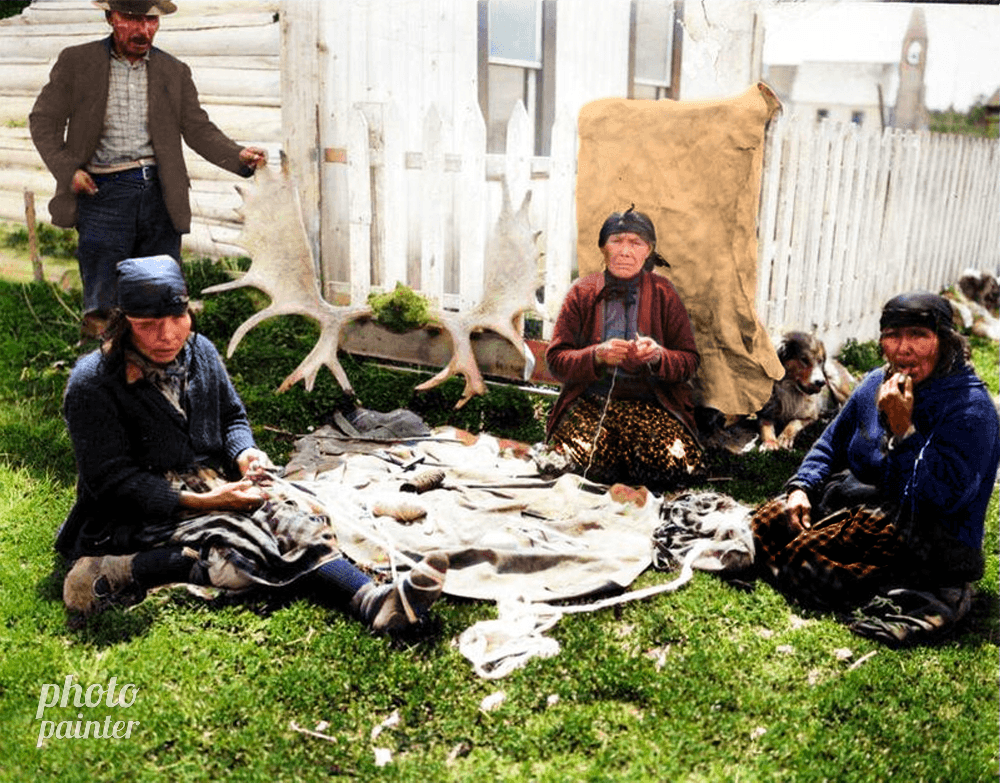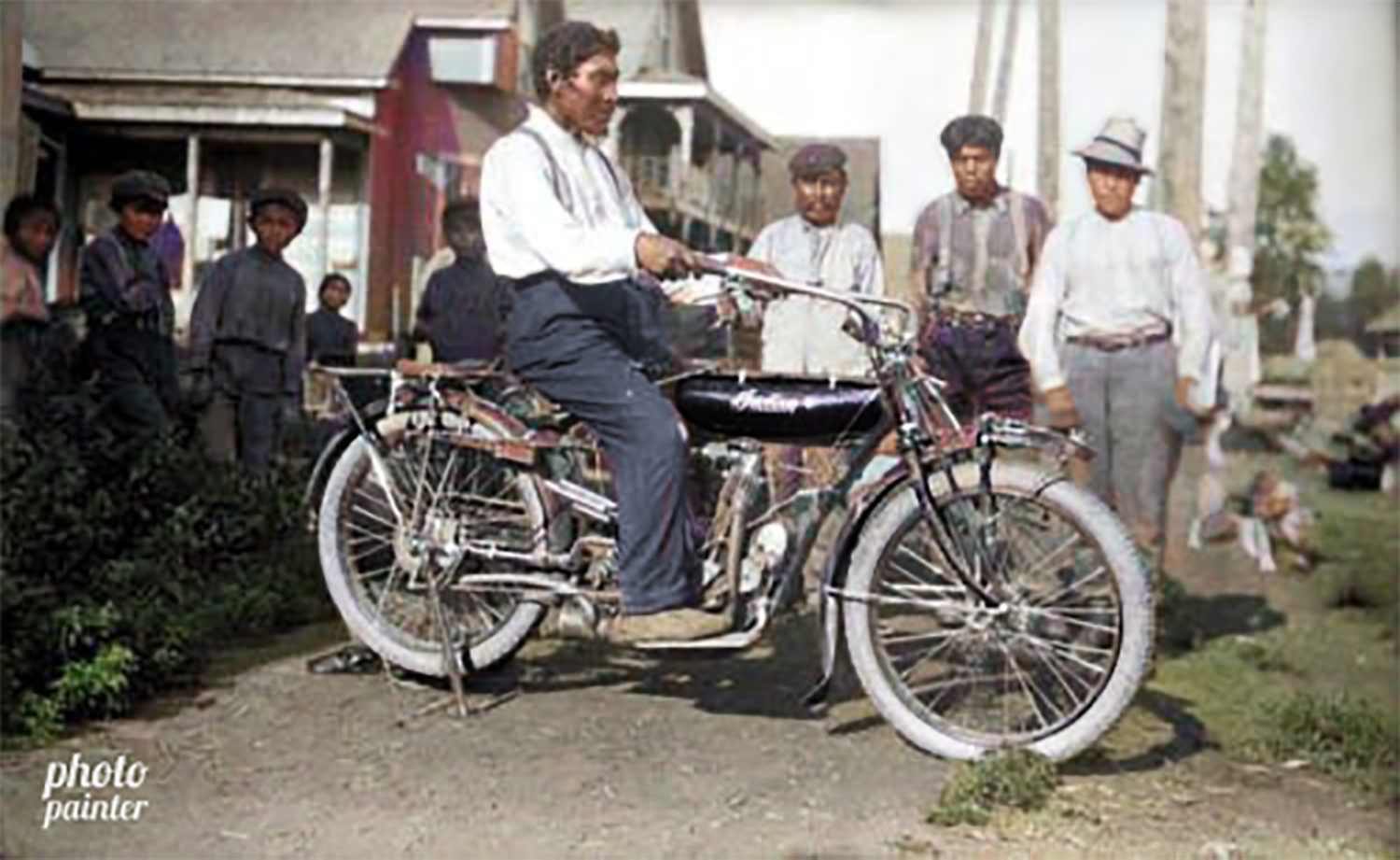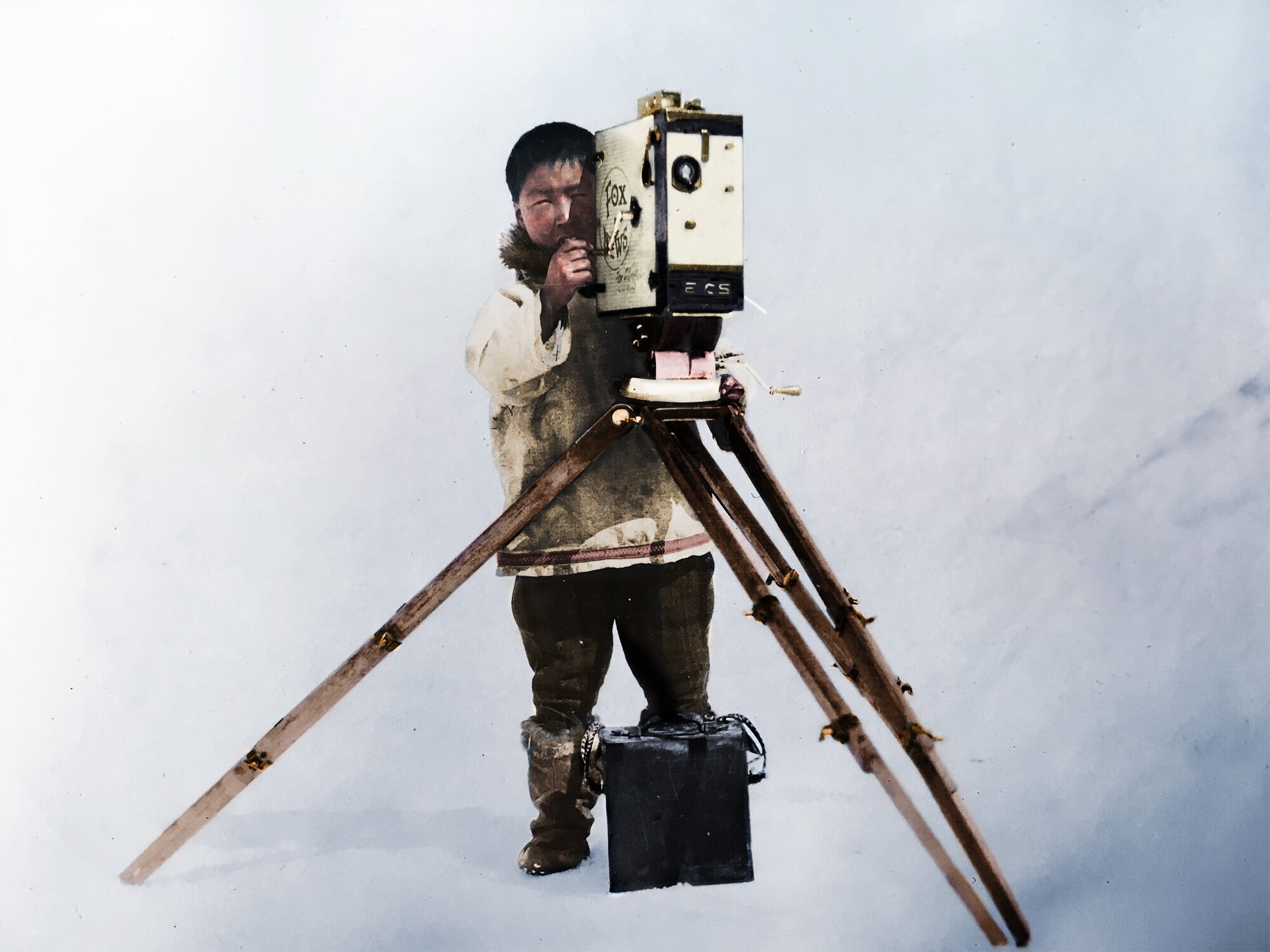Turtle Island
The colonial gaze reversed: An Inuit photographer filming my grandfather (a pilot) and surveyors assessing the ice conditions of the Hudson Strait in 1928. This photo shifts the gaze on to ourselves, as viewers.
For some Indigenous peoples, Turtle Island refers to the continent of North America. The name comes from various Indigenous oral histories that tell stories of a turtle that holds the world on its back.
I realize that as a descendent of colonial European settlers, it’s important to look at my own family’s history and our impact on the First Nations of Canada. First Nations peoples lost most of their land and were forced to live on isolated reserves. More importantly, they lost their identity, and their lifestyle became illegal. Potlatches were banned and children were sent to residential schools where they were often abused. Many First Nations people died from European diseases such as smallpox.
I hope, through colourization, to help bring the indigenous peoples in the photos, literally, out of the shadows. The residential school children, pictured in some photos below, do not smile. Adding colour to the photos taken by colonial settlers makes indigenous faces more visible - and draws attention to our troubled history.
Before & After Colourization
Move the slider below to see the before & after photos








![Oweekayno [sic] First Nations Village, ca 1900](https://images.squarespace-cdn.com/content/v1/5e88eb932343bc6ad6ee26b7/1587174255109-GWPER3N7ZPLW0OZVAEHP/PRArchive_Oweekayno_sic_Indian_Village-Colorized.png)



